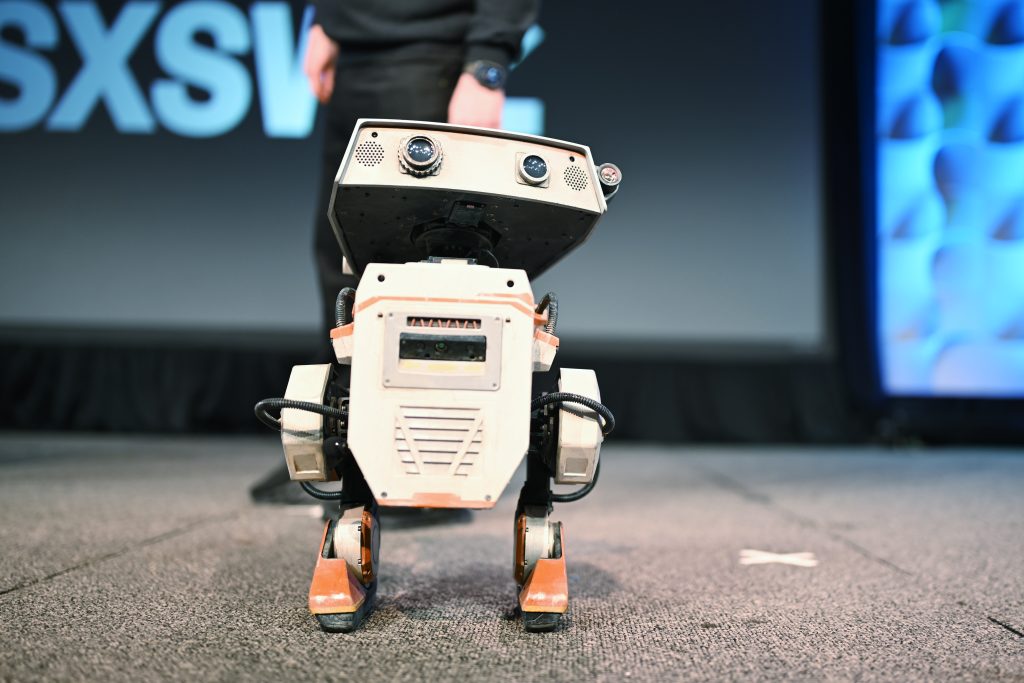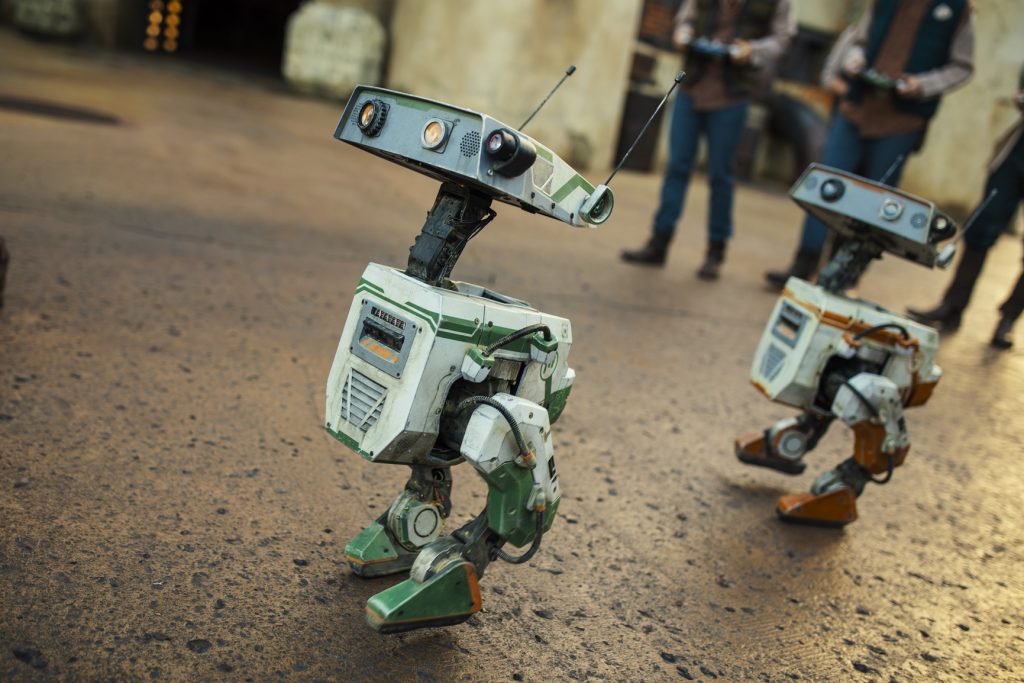It’s hard to miss the BDX droids lately.
In March, the droids — which have greeted guests at Disneyland Resort and onboard the Disney Wish — appeared alongside CEO Bob Iger at The Walt Disney Company’s Annual Meeting of Shareholders; charmed Austin, Texas at Disney’s SXSW featured session with director Jon Favreau (who put them in next year’s Star Wars film, The Mandalorian and Grogu); and returned to the stage at Nvidia’s recent GTC developers conference.
The droids represent the perfect marriage of Disney’s storytelling with incredible innovation. They are both lifelike and technologically advanced. We spoke with Kyle Laughlin, SVP, Walt Disney Imagineering Research & Development, to learn more about the technology behind the droids and how they were brought to life.

 What is the technological breakthrough that the BDX droids represent?
What is the technological breakthrough that the BDX droids represent?
The BDX droids are a big leap forward — not just for robotics, but for how we bring beloved characters to life in the real world. They’re the first of a new generation of expressive, free-roaming robots we’ve developed at Disney that can learn to move and balance like living beings. Thanks to reinforcement learning, they train in simulation before ever taking a real step. But beyond the tech, what really sets them apart is that spark of personality — they’re full of life, and they make people smile. That’s what we’re really after: emotional connection through technology.
How was your team able to make them so lifelike?
We always start with the character. Technology is just the tool — we use it in service of story and emotion. With BDX, that meant thinking about how they move, how they emote, and how guests might engage with them in a meaningful way. From their physical proportions to the way their heads tilt or how their feet land, every choice was made to support believability. And then we added a human touch: a puppeteer behind the scenes who brings out the nuances that make them feel alive.
How does Disney developing the technology used for these droids contribute to advancing the broader robotics industry?
At Disney, we’re not building robots for factories or fulfillment centers — we’re building robots that make you feel something. That’s a very different challenge. We’re bringing emotional intelligence into the field of robotics, and we’re doing it at scale. In the process, we’re sharing new ways of thinking with the broader robotics community. It’s a reminder that the future of this industry isn’t just about what robots can do — it’s about who they can be.
How is the technology that’s been created for the droids going to be applied in the future? Will the technology be adaptable to future developments?
Everything we do is part of a continuum. Audio-Animatronics were the cutting edge 70 years ago — and we’re building on that legacy every day. Our Robotic Character Platform is modular, flexible, and designed to evolve. The core tech — reinforcement learning, expressive motion, character-driven design — can be adapted for lots of different characters and experiences. We’re already working on what comes next, and I think people are going to be surprised by how far this can go.

How does this cutting-edge reinforcement learning used for robotics create ever-more immersive storytelling from Disney?
Reinforcement learning lets us do something pretty amazing: we can train hundreds of versions of a robot in simulation before we ever build one physically. That means faster iteration, smarter movement, and more time to focus on what really matters — creating a compelling character. It shortens the path from idea to emotional connection, and that’s a big deal for us as storytellers.
Disney has a legacy of innovating in service of story. How do these droids take that innovation to the next level?
BDX is a great example of our ethos in action: story first, technology in service of that story. What’s new here is the level of responsiveness, physicality, and charm we can now achieve in real-time, guest-facing environments. It’s not a trick or a one-off moment — it’s an evolving character platform. And we’re just at the beginning.